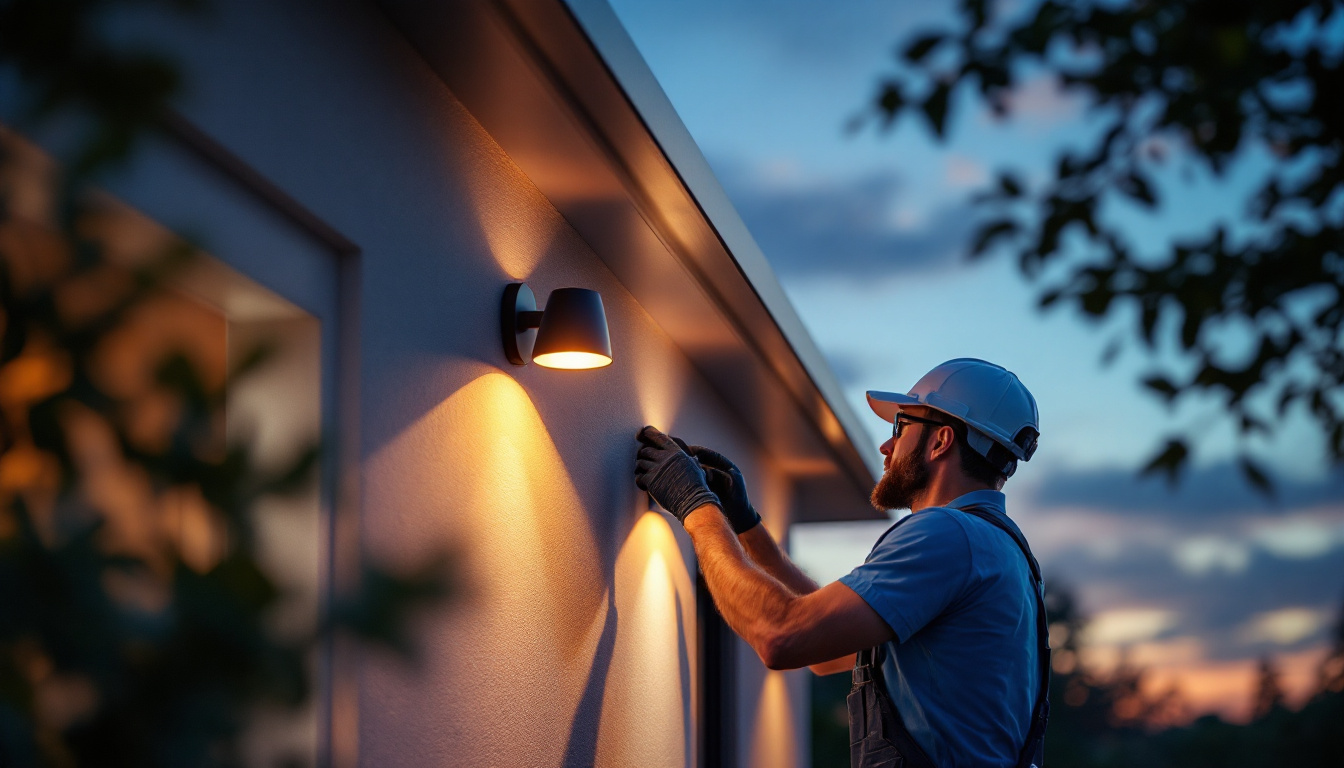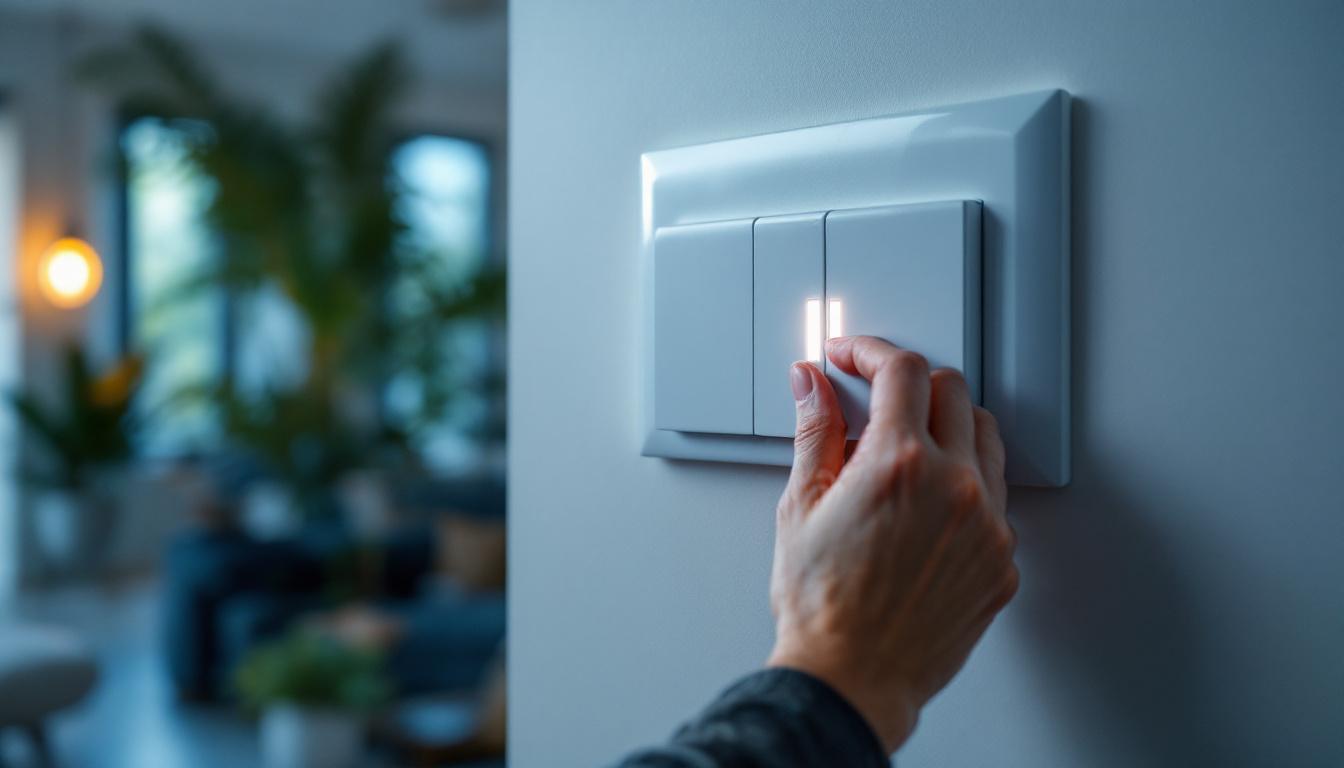
In the ever-evolving landscape of exterior lighting, outside wall lights have emerged as a pivotal element for both aesthetic enhancement and functional illumination. For lighting contractors, the integration of these fixtures into their projects has not only transformed the way they approach design but has also redefined the standards of safety and energy efficiency. This article delves into the various aspects of outside wall lights, examining their benefits, installation techniques, and the innovative technologies that are shaping the future of outdoor lighting.
Outside wall lights serve multiple purposes that extend beyond mere illumination. They play a crucial role in enhancing the safety and security of residential and commercial properties. The strategic placement of these lights can deter potential intruders and illuminate pathways, ensuring that occupants can navigate their surroundings safely.
Moreover, the aesthetic appeal of outside wall lights cannot be overlooked. They add character and charm to a building’s exterior, allowing contractors to create inviting atmospheres that resonate with the architectural style of the property. This dual functionality makes them an essential consideration for any lighting project.
One of the primary reasons for installing outside wall lights is to enhance safety. Well-lit areas reduce the risk of accidents caused by tripping or falling, particularly in dark or poorly lit spaces. By providing adequate illumination along walkways, driveways, and entrances, contractors can significantly improve the safety of a property.
In addition to safety, outside wall lights serve as a deterrent against criminal activity. Properties that are well-lit are less likely to be targeted by intruders, making these fixtures a vital component of any security strategy. Lighting contractors can advise clients on optimal placement and brightness levels to maximize security benefits.
Beyond functionality, outside wall lights contribute to the ambiance of outdoor spaces. They can highlight architectural features, illuminate gardens, and create inviting outdoor living areas. By using various styles, colors, and intensities, lighting contractors can tailor the lighting design to match the client’s vision and enhance the overall aesthetic of the property.
Incorporating outside wall lights into a landscaping plan allows for creative expression. For instance, wall-mounted fixtures can be used to accentuate trees, shrubs, or water features, transforming a mundane outdoor space into a captivating environment. Additionally, the use of dimmable LED lights can provide versatility, allowing homeowners to adjust the brightness according to the occasion, whether it’s a cozy family gathering or a lively outdoor party. This adaptability not only enhances the functionality of the space but also encourages more frequent use of outdoor areas, fostering a connection with nature and the surrounding environment.
Furthermore, the choice of materials and designs for outside wall lights can greatly influence the overall aesthetic. From sleek modern fixtures to vintage lantern styles, the options are vast and varied. Selecting the right materials, such as weather-resistant metals or durable plastics, ensures longevity while maintaining visual appeal. Moreover, integrating smart lighting technology can elevate the experience, allowing homeowners to control their outdoor lighting remotely, set schedules, or even sync with motion sensors for added convenience and efficiency. This blend of form and function not only enhances the property’s exterior but also reflects the homeowner’s personal style and commitment to modern living.
The variety of outside wall lights available today is vast, providing lighting contractors with numerous options to meet their clients’ needs. Understanding the different types of fixtures can help contractors make informed decisions when designing lighting plans.
Wall-mounted fixtures are among the most common types of outside wall lights. They come in various styles, including sconces, lanterns, and floodlights. These fixtures can be used to provide general illumination or to highlight specific areas of interest.
When selecting wall-mounted fixtures, contractors should consider the style of the building and the desired effect. For instance, traditional lanterns may complement a classic home, while sleek, modern sconces may be better suited for contemporary architecture. Additionally, wall-mounted fixtures can be strategically placed to enhance security by illuminating entryways, driveways, and patios, creating a welcoming atmosphere while deterring potential intruders.
Recessed lighting offers a more subtle approach to outdoor illumination. These fixtures are installed within the wall, providing a clean and streamlined look. They are particularly effective for highlighting architectural details without overwhelming the overall design.
Recessed lights can be used to create dramatic effects, such as uplighting on walls or downlighting on pathways. Lighting contractors can experiment with different placements to achieve the desired ambiance while maintaining functionality. Furthermore, the use of dimmable recessed lighting can allow homeowners to adjust the brightness according to their needs, making it an adaptable choice for various outdoor activities, from intimate gatherings to larger celebrations.
With the growing emphasis on energy efficiency, LED and solar-powered outside wall lights have gained popularity. LED fixtures consume significantly less energy than traditional incandescent bulbs, making them an eco-friendly choice for outdoor lighting.
Solar-powered lights, on the other hand, offer the advantage of being self-sufficient, requiring no wiring or electrical connections. They harness sunlight during the day to power their illumination at night. This makes them an excellent option for contractors working on projects with limited access to electrical sources. Additionally, many solar lights now come equipped with motion sensors, which can enhance security and save energy by only activating when movement is detected. As technology continues to advance, the durability and brightness of solar-powered options have also improved, allowing for a wider range of applications in outdoor settings.
Proper installation is crucial for the effectiveness and longevity of outside wall lights. Lighting contractors must adhere to best practices to ensure that the fixtures function optimally and meet safety standards.
Before installation, contractors should carefully plan the layout of outside wall lights. This involves assessing the property’s layout, identifying key areas that require illumination, and determining the appropriate type and style of fixtures. A well-thought-out plan will lead to a more cohesive and effective lighting design.
Consideration should also be given to the height and angle of the fixtures. Proper placement can enhance visibility while minimizing glare and light pollution. Contractors should aim for a balance between aesthetics and functionality in their designs.
When installing outside wall lights, electrical considerations are paramount. Contractors must ensure that all wiring is up to code and that fixtures are rated for outdoor use. This includes using weather-resistant materials and ensuring proper sealing to prevent moisture ingress.
For solar-powered lights, installation is generally simpler, as they do not require extensive wiring. However, contractors should still ensure that the solar panels receive adequate sunlight for optimal performance.
Once the installation is complete, testing the lights is essential. Contractors should check for proper functionality, brightness levels, and any potential issues such as flickering or uneven lighting. Making adjustments at this stage can save time and resources in the long run.
Additionally, contractors should educate clients on how to maintain their outside wall lights, including cleaning and bulb replacement, to ensure longevity and consistent performance.
The lighting industry is continually evolving, and innovative technologies are playing a significant role in transforming outside wall lights. Contractors who stay informed about these advancements can offer cutting-edge solutions to their clients.
Smart lighting technology has revolutionized the way outside wall lights are controlled. With the integration of smart home systems, contractors can install fixtures that can be controlled remotely via smartphone apps or voice commands. This allows homeowners to adjust brightness levels, set schedules, and even change colors to suit different occasions.
Smart lighting not only enhances convenience but also promotes energy efficiency. Homeowners can program their lights to turn off when not needed, reducing energy consumption and lowering utility bills.
Incorporating motion sensors and timers into outside wall lights adds an extra layer of functionality. Motion sensors can detect movement and automatically activate the lights, providing illumination only when needed. This feature is particularly beneficial for enhancing security and conserving energy.
Timers allow homeowners to set specific on and off times for their lights, ensuring that they are illuminated during peak hours and turned off when not in use. This level of control is appealing to clients looking for both convenience and efficiency.
As sustainability becomes increasingly important, energy-efficient technologies are gaining traction in the outdoor lighting sector. Beyond LED and solar options, advancements in lighting design, such as the use of smart controls and adaptive lighting systems, are helping to reduce energy consumption.
Contractors who prioritize energy efficiency can not only meet client demands but also contribute to a more sustainable future. By offering solutions that minimize environmental impact, they can position themselves as leaders in the industry.
Outside wall lights are more than just functional fixtures; they are essential tools for lighting contractors aiming to enhance safety, security, and aesthetics in outdoor spaces. By understanding the various types of outside wall lights, mastering installation techniques, and embracing innovative technologies, contractors can transform their approach to exterior lighting.
As the industry continues to evolve, staying informed about trends and advancements will enable lighting contractors to deliver exceptional results for their clients. Ultimately, the integration of outside wall lights into lighting projects not only enhances the beauty of properties but also ensures that they are safe and inviting for all who enter.
Ready to elevate your lighting projects with the finest outside wall lights on the market? At LumenWholesale, we offer an extensive selection of spec-grade lighting products that blend quality, affordability, and convenience. Say goodbye to local distributor markups and hello to top-quality lighting at wholesale prices, complete with the ease of bulk buying and free shipping. Enhance the safety, security, and aesthetics of your outdoor spaces with reliable, high-performance lighting. Discover the value of shopping with us and make your next project shine. Visit LumenWholesale for Wholesale Lighting at the Best Value.

Discover how electronic dimmer switches can revolutionize your lighting projects.

Discover the essential best practices for manufacturing lighting fixtures tailored specifically for lighting contractors.

Discover everything shop lighting contractors need to know about 4′ LED shop lights, including compliance tips, benefits, and industry insights to optimize your projects..

Discover innovative strategies and expert insights into selecting and installing industrial light fixtures with a focus on efficiency and style.